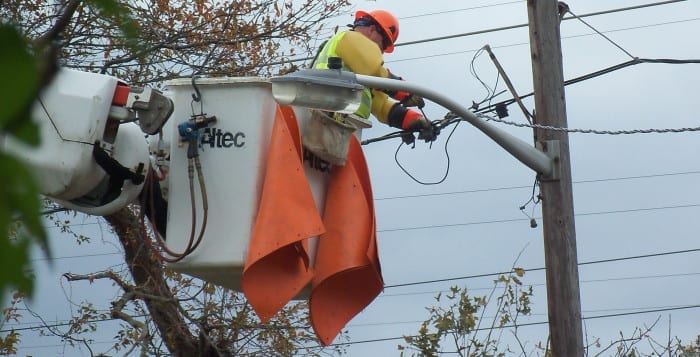Port Jefferson Village moved another chess piece in its match against the Long Island Power Authority last week, filing a lawsuit to dispute the utility’s property tax challenges from the last few years, which are still pending in court.
Village Attorney Brian Egan said at the board of trustees meeting Tuesday night that the village filed the lawsuit last Friday contending LIPA had promised not to challenge its property tax assessment at the Port Jefferson power plant unless the assessment was disproportionately increased.
That perceived promise links back to a 1997 letter from former LIPA chairman Richard Kessel, upon inking a power supply agreement between LIPA and the Long Island Lighting Company, as the former was taking over for the latter. That agreement covered power plants now owned and operated by energy company National Grid, which includes those in Port Jefferson and Northport.
Back then LIPA and local municipalities were embroiled in other tax assessment challenges. Kessel’s letter said the utility would drop those challenges and would not “initiate any further tax certiorari cases on any of their respective properties at any time in the future unless a municipality abusively increases its assessment rate.”
Port Jefferson has actually gone in the opposite direction on the neighborhood power plant’s assessment, officials confirmed Tuesday — LIPA’s assessment was only proportionately increased over time, and since it began challenging its assessment in 2010, it has in fact seen a decrease. Officials called that 10 percent decrease an act of good faith as they negotiated with the utility on the matter.
At the heart of the issue is a disagreement over the worth of the local power plant: LIPA contends it is grossly overassessed, forcing the utility to pay more in property taxes than it should.
The power plant is a large source of tax revenue for the area, particularly the Port Jefferson school district and the village. Smaller stakeholders include the Port Jefferson fire and library districts and the Town of Brookhaven.
As LIPA’s property tax challenges trickle through the court system, Port Jefferson’s latest lawsuit piggybacks on an idea from out west — Huntington Town and the Northport-East Northport school district filed a similar suit a couple of years ago in their battle on the Northport power plant, which mirrors the situation in Port Jefferson. That inceptive lawsuit, challenging LIPA’s ability to challenge its property tax assessment, faced a motion to dismiss that New York State’s highest court recently denied — allowing the case to play out. Seeing the ruling in favor of Huntington and Northport, Port Jefferson followed suit.
“I feel very strong,” Egan said about the case.
According to the village attorney, he will ask that court action on LIPA’s tax challenges be delayed until the new lawsuit is resolved.
The Port Jefferson and Huntington area lawsuits may also be joined, and it is possible more plaintiffs, such as Brookhaven Town and the Port Jefferson school district, could jump in.
At the time the courts denied LIPA’s motion to dismiss Huntington Town and the Northport school district’s lawsuit, a LIPA spokesperson said the utility does not comment on ongoing litigation.
If the municipalities win their lawsuits regarding LIPA’s right to challenge its property tax assessments, those pending challenges would be thrown out.










